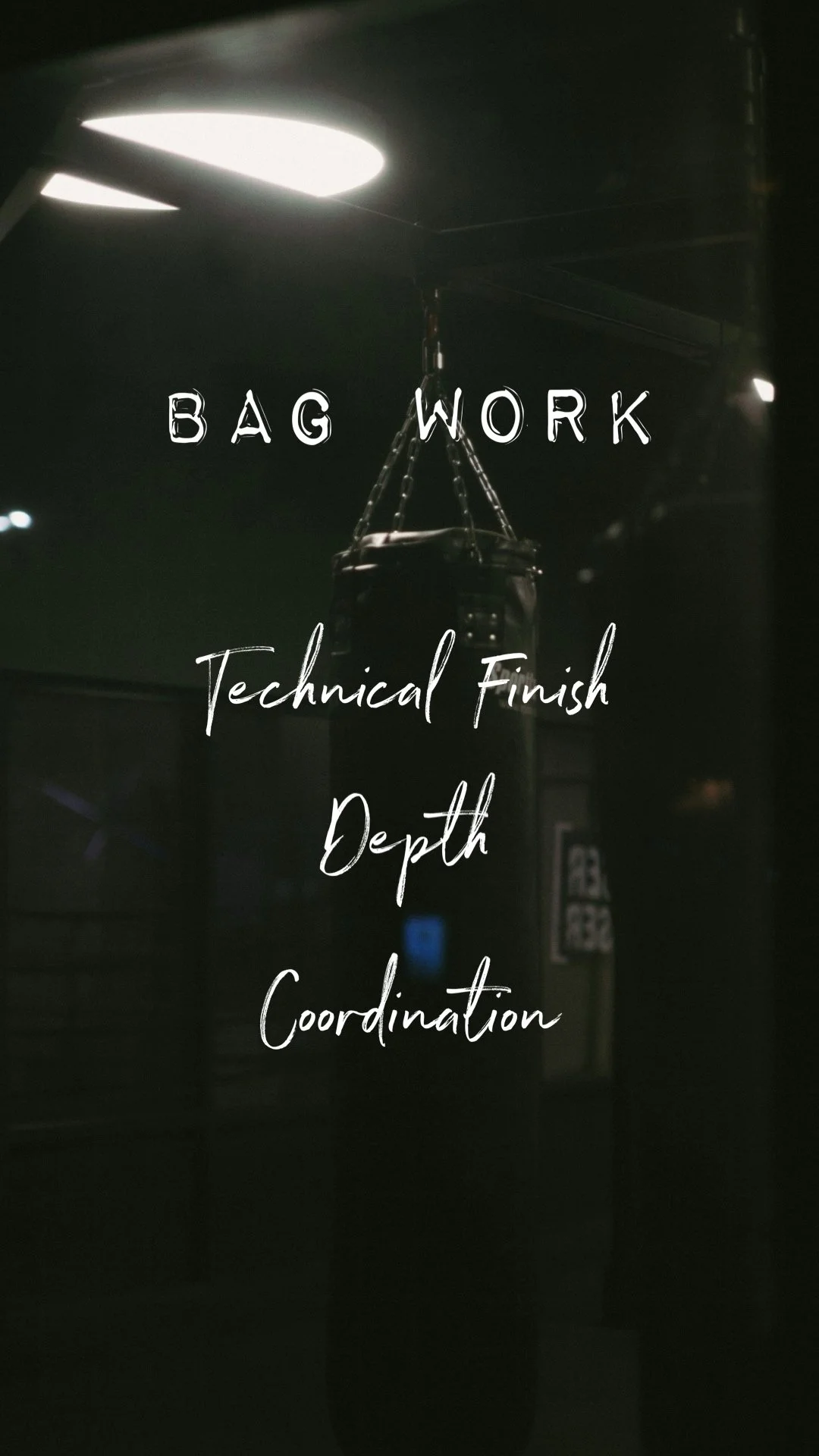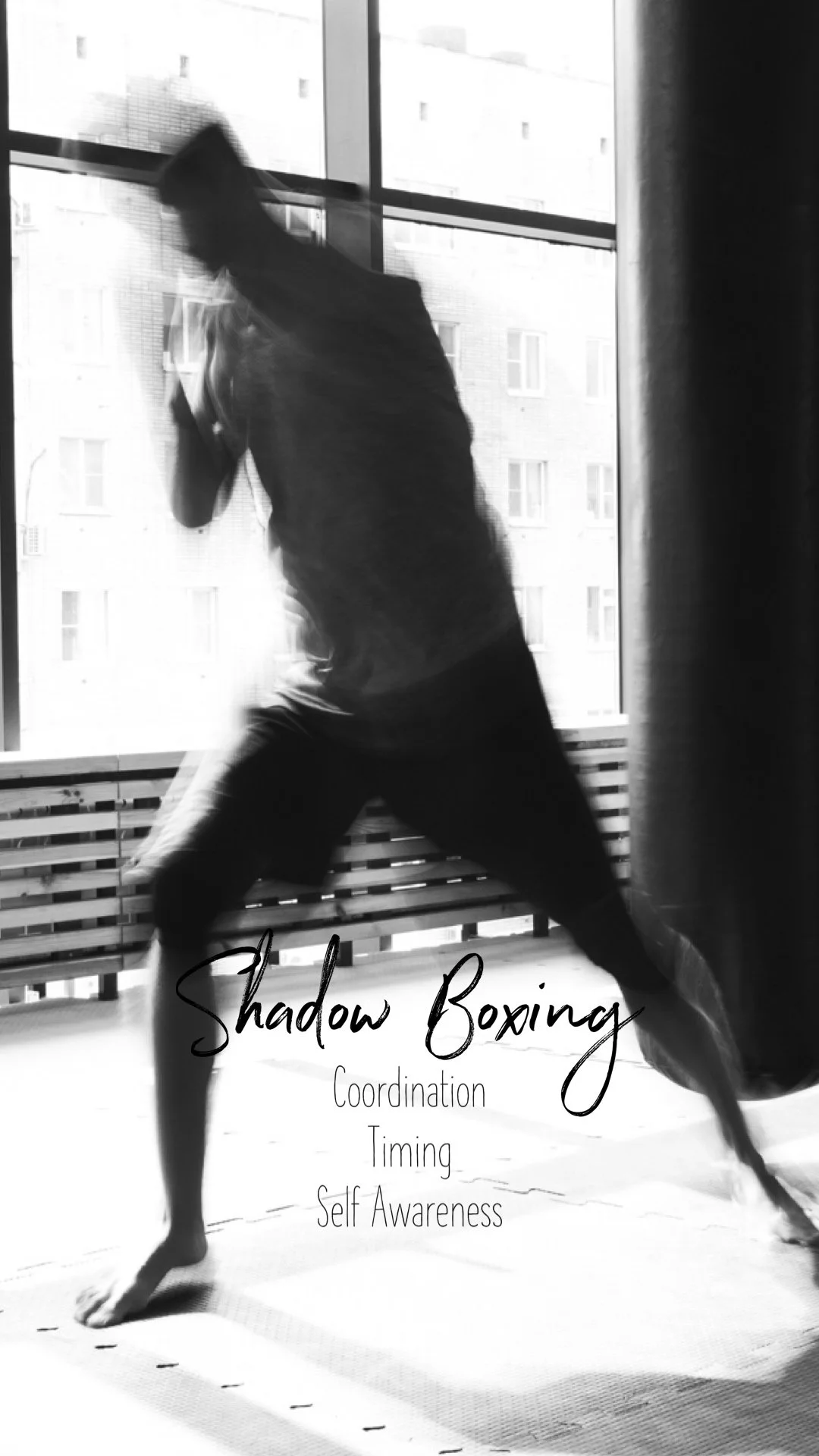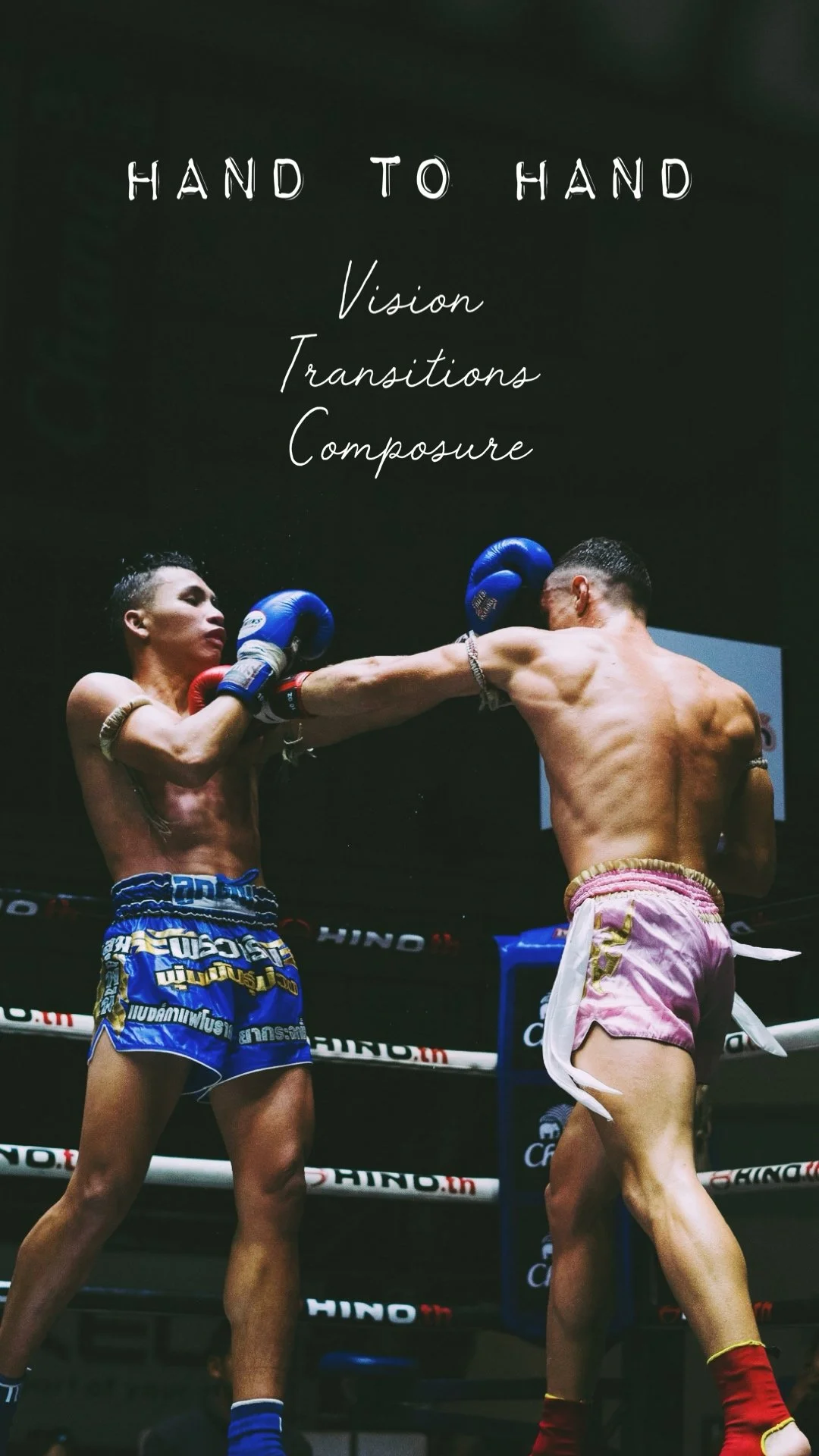Tools
Chapter Intro:
The classical tools heavy bag, shadow boxing, and pad work at the fundamental is to simply refine the order of operations your technique. Each technique has an order of operations to produce the movement, and the beginner must take the time to develop the feel of this order.
What is the order of operations per weapon?
Think ‘roots to fruits’. On each technique, identify what i) The lower body is doing, ii) the torso and iii) upperbody
“It is critical, that a teachers speech matches the purpose of the tool.”
The right tools, the right words.
Remember that we learn what is emphasized, not what is said. Each tool carries a different emphasis for development in which we’ll discuss below. It is critical, that a teachers speech matches the purpose of the tool. In doing so, we create symmetry between for a student: ‘what am I doing and what outcome does this tool help me achieve?’
Bags train how to end a technique.
Bag work would be akin learning the alphabet; refining the individual letters and in the process learning how to pronounce a given letter—and it’s accompanying sound. The heavy bag is like this. It is the students opportunity to learn a technique at a slower pace and to focus on how each individual technique operates:
Technical Finish: This is about differentiating between mechanical force, and muscular force. That you are using the correct physical mechanics to deliver the energy of your technique in the correct direction. Take a punch for example. It is easy to throw a punch, but only to end up scraping the bag on impact. This tends to happen with hooks and circular punches. A hook should finish with sense of ‘digging’ into the target rather than a scrape or slap. So, to finish technically is to take time and train the feeling of a a techniques particular ‘finish’.
Depth: The bag is meant to teach the fighter how to technically finish their technique and to centre in on that idea without the concern of being hit back. It allows you the solace to focus on the depth of your attack:
Skin
Muscle
Bone
Organ
Each target (head, torso, limb) have a different type of depth to yield an effect. Being the thickest target, the torso requires much more depth of finish relative to attacking the head or limbs. Getting familiar with the notion of hitting with depth is the fundamental point of bag work.
Coordination: All techniques have an active component, and a passive component. Ie, the off hand of your punch should be protecting your face while the other punches; prior to kicking, on must anchor their weight onto the standing leg. Taking time on the bag to train the delivery and finish of your weapons is an opportunity to develop a sense of acuity for the order of operations required for each technique.
Pad Work is cumulative work
If bag work is like alphabet work, pad work is like writing words and sentences. It assumes you have an understanding of the individual processes of technique, and can now traverse from one technique, into another, and another.
Coordination
Transitioning amongst multiple techniques requires coordination; chaining together multiple orders of operation to create a seamless pattern of movements. Combinations, offensive and defensive transitions require the body to move in different directions and the student must connect these movements in a seamless and timely way.
Conditioning
Pad work is essentially ‘power-endurance’ work. it’s doesn’t require maximum power for a short amount of time with maximum rest. It is power, for an extended period of time (5rds @ 3mins per rd) with a one minute break in between. With that said, students must throw their technique as well as possible and produce the maximum result over time, followed by a period of rest for a short period of time. In formal terms, the energy systems that are primarily at work are:
ATP PC (Adenosine Tri Phosphate-Phosphocreatine_) these are amino acids stored in our muscles, responsible for 60-70% of power good for roughly 7-15m. The energy is created from food from the night before or a time period prior to training, and recharged during training through oxygen.
Aerobic system: Responsible for 10-50% of power for 3+ hours, this system puts out minimal power, but recharges the ATP PC system above. As Tri phosphates breakdown into Di (2) phosphates and release energy, oxygen replenishes themselves molecules back into tri(3) phosphates for repeated use.
Pad work trains the body to switch between these two energy systems and makes more efficient over time.
Placement
Another name for ‘pad work’ is ‘target work’. The goal is to hit the targets, and land well. So placement of technique is of primary importance. Like bag work, the emphasis is to land well, but because of the compounding nature of pad work a challenge in conditioning and coordination become inherent challenges. It is important create a hierarchy of emphasis:
The primary job is to land a technique accurately on the pads 1st.
A secondary goal is to land multiple attacks well, but not before you can land one.
Conditioning is a side effect of doing the above two well. You don’t make pads difficult for difficults sake.
Shadow Boxing is smooth work.
Think of shadow boxing like talking to yourself. It’s practice, without the penalty of making a mistake in live conversation. It is where we train the connection of one move to another move and establish our own sense of feel. Feel is what matter most. When we establish this, we establish our sense of coordination and familiarity. All of which contributes to our sense of confidence. By ‘feel’, I mean:
Coordination: Transitioning smoothly from one position, to another is to be coordinated. It can be from left, to right, right to left, high to low, low to high, short to long, long to short etc.
Timing: Refers to the cadence, and/or tempo of one’s transition from one position to another, and how each position necessitates a different cadence.
Self Awareness: Refers to your sense of awareness at an acute level. Knowing when your are in balance, and out of it; in a nuanced way. Before one can feel a fight, we must begin with feeling ourselves.
Hand to Hand is exchange work.
If vocabulary work is about building your arsenal, then hand-to-hand sparring is the conversation itself. It’s where theory meets reality, and you learn the rhythm of exchange—when to strike, when to evade, when to assert control, and when to yield. This isn’t scripted learning; it’s a dynamic, experiential process fueled by trial, error, and flashes of insight. Sparring teaches you the delicate dance between offense and defense, showing how each action triggers a reaction, weaving the fluid interplay that defines true Muay Thai mastery. It’s the living dialogue where techniques breathe, adapt, and evolve in real time.
Vision
The central skill set in Muay Thai is vision — the ability to perceive and interpret what’s unfolding around you. Acting defensively means recognizing a threat; acting offensively means identifying an opportunity. But before you can do either effectively, you must first conquer the fear of the unknown and clearly separate what’s real from what your mind may be guessing.
Mastering the proper use and placement of your eyes is absolutely crucial. It’s what allows you to discern threat from opportunity. When you spot offensive opportunities, your vision must lock onto precise targets — not just the opponent, but the specific openings to strike. Conversely, when you shift to defense, your focus narrows onto your opponent’s intentions aimed at you, reading their movements and anticipating attacks.
These are not innate skills. They must be trained deliberately. That’s why hand-to-hand sparring begins at low speed and low stress—so the student can develop clarity of vision and decision-making without panic clouding their judgment. Only after this foundation is solid can speed, pressure, and intensity increase. Building vision in this way transforms fear into confidence, hesitation into action — the essence of traditional Muay Thai adapted for modern warriors.
Transitions
Offense and defense in Muay Thai are not isolated actions; they are fluid expressions of the same energy, constantly shifting between each other. Every offensive strike must be executed with an awareness that it can seamlessly transition into a defensive maneuver the moment a threat is identified. Similarly, every defensive action should be performed with the intent to immediately convert into an offensive technique.
Achieving this seamless interchange demands a perfect synchronization—a 1:1 ratio—between perception and response. This harmony requires disciplined practice because instinct and reaction often diverge. Training must focus on rewiring the fighter’s instinct to ensure that what the eyes see is instantly translated into the correct action, whether it’s a counterattack or a defensive adjustment. Mastery lies in this continuous dance, where offense and defense are not opponents but partners moving as one.
Composure
A body using itself as a weapon is no longer a common threat, but when it happens, it is rare and deadly—often catching people unprepared. It’s natural to panic or flinch in these moments. The key is to train gradually and consistently, following the principles above. If training is too intense, the stress will overwhelm and hinder progress. Too light, and there’s no urgency to drive improvement. Striking the right balance—applying just enough intensity—is essential to develop the skills and confidence needed to respond effectively.




